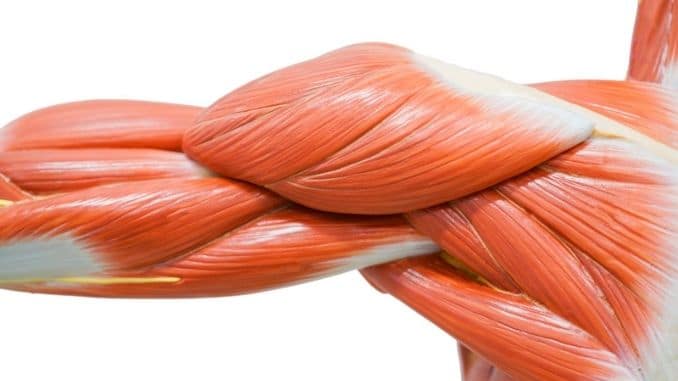
With the upcoming release of the second version of Muscle Imbalances Revealed – Upper Body – I thought it would be fitting if I highlighted a few muscle imbalances mistakes that I have seen.
1. Tight Muscle
When people hear the words “muscle imbalance,” they think “tight muscle,” so let me stretch it.
This is right – you need to stretch – but why does the muscle imbalance come back after you stretch? Because there is much more to eliminating muscle imbalances permanently than just stretching tight muscles. That is mistake #1 when it comes to muscle imbalances.
Let me go through a few more that you or your clients might be making.
2. Not Looking at Fascia
We all know someone who has plantar fasciitis.
There is a good chance they have been given to address their plantar fasciitis is stretches.
Many times this will provide temporary relief, but the pain comes back. People try to address plantar fasciitis like it is a muscle issue, even though it is a fascia issue.
This is one example, but there are numerous other examples in the hamstrings, biceps, and IT band.
To address muscle imbalances, you need to address fascia in the body like fascia and not muscle.
3. Not Taking Breathing Seriously
Only focusing on breathing out during exertion and breathing in during relaxation phases of exercise are essential to keep steady blood pressure in clients. Still, breathing is so much more than that.
It needs to be integrated into core exercises to relax the diaphragm and the accessory muscles of the chest wall.
Dynamic activity should be integrated to help improve movement efficiency and proper movement patterns.
It needs to be incorporated into stretching and self-massage (SMR) to get the maximum benefit from the stretch or self-massage plus relax surrounding muscles and fascia.
4. All Core Training is the Same
Over the last 13 years, core training has evolved tremendously. More research is being done on the continuum of core training in clients who are rehabilitating an injury, improving fitness results, or maximizing performance goals.
Core training has become a continuum that you move along or focus on to get the desired results.
There are many more mistakes exercise enthusiasts and health & fitness professionals make regarding muscle imbalances. Still, I think you get the point from just these four examples.
Next time you come across a tight muscle, remember that there is more than just stretching it out.
Rick Kaselj, MS
P.S. – One thing that may help you is the Muscle Imbalances Revealed series. Here are some kind words from a strength coach on the program:
“I Have a Deeper Understanding of Muscle Imbalance”
As a fitness professional who works with athletes as well as elderly clients, I feel MIRU has allowed me to have a deeper understanding of muscle imbalance.
MIRU has changed the way I progress through a client. I now begin to look at all opposing muscles to see where the imbalance is before I start my progressions.
Joseph Yager Independent Strength and Conditioning Coach, Motivational Speaker, and Baseball Instructor Urbana IL

